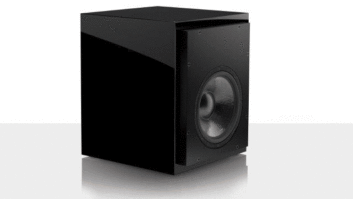Apple’s iTunes digital download site has become the second-largest music retailer in the United States behind only Wal-Mart, according to data from The NPD Group.
iTunes leapfrogged Best Buy for the No. 2 spot, while Target came in fourth.
NPD based its rankings on 2007 unit sales, excluding wireless transactions, using a 12-track CD equivalency for music-track downloads. The data was derived from NPD’s Digital Music Study, an annual survey of 5,000 consumers weighted to reflect the Internet population (age 13 and older), and NPD MusicWatch, which tracks that demographic’s past seven-day music purchase habits.
iTunes has sold more than 4 billion songs since its inception nearly five years ago, Apple said, and now boasts 50 million customers and a catalog of more than 6 million songs. The digital download store sold 20 million songs on Christmas Day 2007 alone, the company reported.
“We’d like to thank the over 50 million music lovers who have helped the iTunes Store reach this incredible milestone,” said Eddy Cue, Apple’s iTunes VP, in a statement.
Legal music downloads now represent 10 percent of the music acquired in the United States, NPD said, accounting for iTunes’ rise in the rankings. Twenty-nine million consumers acquired digital music legally via pay-to-download sites last year, an increase of 5 million over 2006. Sales growth was largely driven by consumers ages 36 to 50, a segment that was aggressively acquiring MP3 players in 2007.
While the portion of the Internet population in the United States that engaged in peer-to-peer (P2P) file sharing reached a plateau of 19 percent last year, the number of files each user downloaded increased, and P2P music sharing continued to grow aggressively among teens.
Total music sales increased by 6 percent in unit volume last year, NPD noted, although the sharp increase in legal digital download revenues could not offset declines in CD sales, resulting in a net 10 percent decline in music spending, from $44 to $40 per capita among Internet users. Consequently, the overall portion of music acquisition that consumers actually paid for fell to 42 percent in 2007 from 48 percent in 2006.
NPD estimates that 1 million consumers dropped out of the CD buyer market in 2007, led by younger consumers. Last year 48 percent of U.S. teens did not purchase a single CD, compared to 38 percent in 2006, the market research firm said.
“The continued growth in legal download sites is encouraging, yet the industry struggles to improve the value of each digital customer,” said Russ Crupnick, entertainment industry analyst for The NPD Group. “With so many baby boomers and gen-Xers entering the market, there are certainly opportunities to sell more digital albums, promote older catalog titles, or create bundles that will raise revenues. In the near term that’s going to be the best means available to narrow the gap on dwindling CD revenues.”













